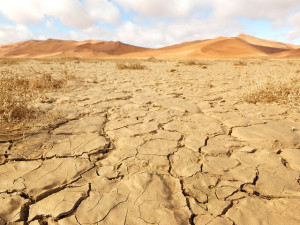What Lies Beneath: A Hidden Danger lurks under Earth’s crust
A big earthquake is coming, but we don’t know when. That’s the problem faced by some of the world’s most at-risk cities. Because they are built near very active boundaries between the tectonic plates that form Earth’s crust, the likes of San Francisco, Tehran and Istanbul will experience very large quakes every few hundred years. But the risk to life does not only depend upon the hazard of the earthquake itself; vulnerability to the hazard is also important. For this reason, one of the American cities most at risk because of earthquakes is New York: though it is unlikely to encounter a very large earthquake, its aged infrastructure would suffer catastrophically in even a moderate-strength one that is much more likely. Elsewhere in the world, the cities most at risk tend to be those that have rapidly grown over recent decades using cheap, weak materials. When it comes to absolute risk, therefore, corruption amongst corner-cutting builders, political decisions not to put in place stringent building standards and ignorance about earthquake dangers can be just as important as the earthquake’s magnitude.
Istanbul in Turkey suffers from the dual threat of a potential for very large earthquakes and high vulnerability[1]. It sits very close to the North Anatolian fault, along which a succession of quakes has moved westwards in recent years, and is the next place in line for a strong earthquake to hit. Many of the buildings are very old, overcrowded or shoddily constructed, and the death toll amongst its thirteen million inhabitants could be huge.
If only we could know exactly when and where earthquakes would strike, this risk would of course be much less. But earthquakes can’t be predicted with anything like the accuracy of weather, say, which isn’t exactly straightforward to forecast in itself. Typically, we can predict only two of the three things we realy need to know about a quake – the place, time and magnitude – at once. For instance, we know that stress building up between tectonic plates in a given location will be released as an earthquake of a certain size sooner or later, but it’s impossible to tell exactly when. That’s why regions susceptible to big earthquakes should be constantly prepared for one to strike. It’s typically because of political unwillingness or ignorance that this doesn’t always happen.
As noon approached on Saturday 1st September 1923, a slight tremor began in the Tokyo-Yokohama area of Japan. Within seconds, the shaking intensified, and thousands of buildings began to collapse. Ferocious fires broke out from the coal- and charcoal-burning stoves used to prepare the midday meal, and a huge uplift of land provoked landslides, destroying thousands more. The total death-toll was over one-hundred and forty thousand people, the most devastating earthquake in Japanese history. Yet much bigger quakes have occurred since 1923. Part of the reason that the death toll of sixteen thousand wasn’t higher in the March 2011 earthquake is that Japan has taken stringent measures to make its infrastructure robust and warn the public of earthquakes and aftershocks. Though we can’t predict them in advance, seismologists can detect the first, minor tremors beginning and issue warnings minutes before a major quake arrives. Taking earthquakes seriously in this way and recognising that we can’t prevent or predict them, but can pre-empt them, is the best way of protecting ourselves when the next big one strikes.
[1] Barnes, Katherine: Clock Ticking for an Instanbul Earthquake from Nature News (March 2010), available from http://www.nature.com/news/2010/100312/full/news.2010.121.html (accessed December 2014)
![Surviving Earth’s Hidden Danger What Lies Beneath: A Hidden Danger lurks under Earth’s crust A big earthquake is coming, but we don’t know when. That’s the problem faced by some of […]](/wp-content/uploads/2015/02/dry-ground-640x361.jpg)
